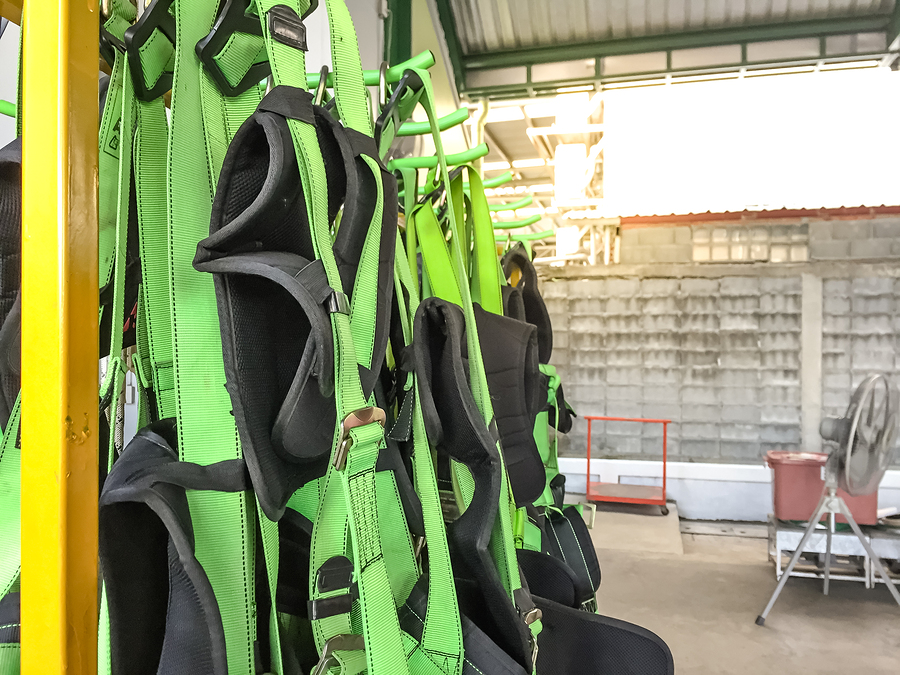Safety is imperative when operating machinery, specifically mobile elevating work platforms (MEWPs). At Vandalia Rental, we value safety precautions and remaining up to speed on the latest regulations for MEWPs.
Most MEWP operators know that PFPE (personal fall protection equipment) is required for operating Group A and Group B MEWPs; however, there is a lot of confusion in the industry due to misinformation.
There are two key points all MEWP operators should understand:
- Primary fall protection on all MEWPs is provided by the guardrail system, which wraps around the container.
- Secondary fall protection may be required by the standards for MEWPs in North America, or by employer or government regulations.
OSHA, OHS and the ANSI A92 and CSA B354 standards have specific requirements for fall protection in the United States and Canada.
Fall Protection Requirements on Group A MEWPs
Standards for manually-propelled elevating work platforms and self-propelled elevating work platforms, such as scissor lifts and single personnel lifts do not require a secondary form of fall protection aside from the guardrails.
However, if employer or government standards require additional PFPE, Genie provides additional lanyard attachment points for that purpose.
Fall Protection Requirements on Group B MEWPs
Approved PFPE, in addition to guardrails, is required in North America for all boom-supported MEWPs. This standard is mandated by the standards for Mobile Elevating Work Platforms and Vehicle-Mounted Elevating and Rotating Aerial Devices; it is enforced by OSHA in the United States and OHS and provincial authorities in Canada.
The two types of secondary fall protection are Fall Restraint and Fall Arrest.
- Fall Restraint: The fall restraint prevents a MEWP occupant from falling by using a body belt or full-body harness. It is the employer, user, or operator’s responsibility to ensure that the lanyard and anchor prevent the operator from falling outside the platform.
- Fall Arrest: Instead of a body belt, a full body harness and lanyard is used. Both of these PFPE limit the fall distance to less than six feet, and limit arresting force on the occupant. These also provide a shock absorbing section or are self-retracting.
Regardless of the PFPE, the user is responsible for providing approved fall protection for all employees.
Secondary Fall Protection Requirements on Group B MEWPs
During travel in the stowed position, there are two options for secondary fall protection for Group B operators and occupants.
- The operator and occupants are required to wear a full body harness with either a fall restraint system or a 6-foot maximum self-retracting lifeline, approved for MEWP use by the manufacturer.
OR
- Operators and occupants are required to wear a full body harness with a double lanyard system, utilizing fall arrest and fall restraint.
According to Genie Lift, “The fall restraint lanyard must be used during travel in the stowed position and when the platform height is below the calculated total fall distance. The fall arrest lanyard can be used when the platform height is above the calculated total fall distance and when all other factors have been taken into consideration.”
The final takeaway is to be up to speed on all regulations and safety requirements when operating a MEWP. Each occupant and operator must be equipped with the appropriate protection equipment at all times.
If you have additional questions or wish to speak to a representative, contact us today.


